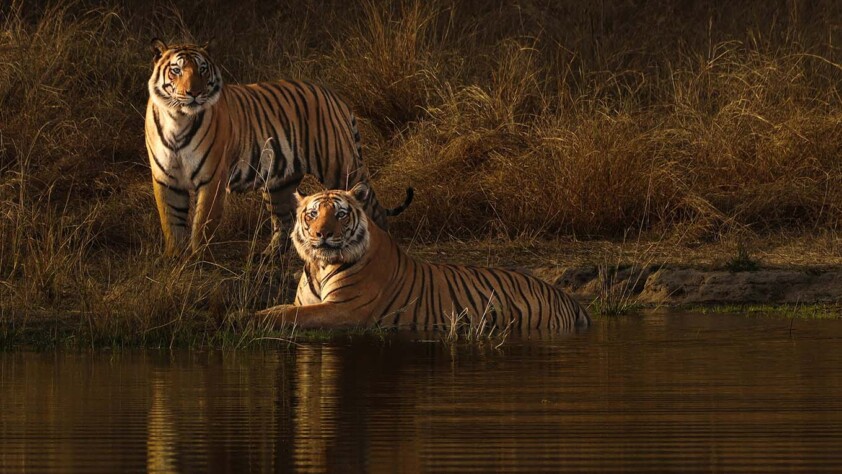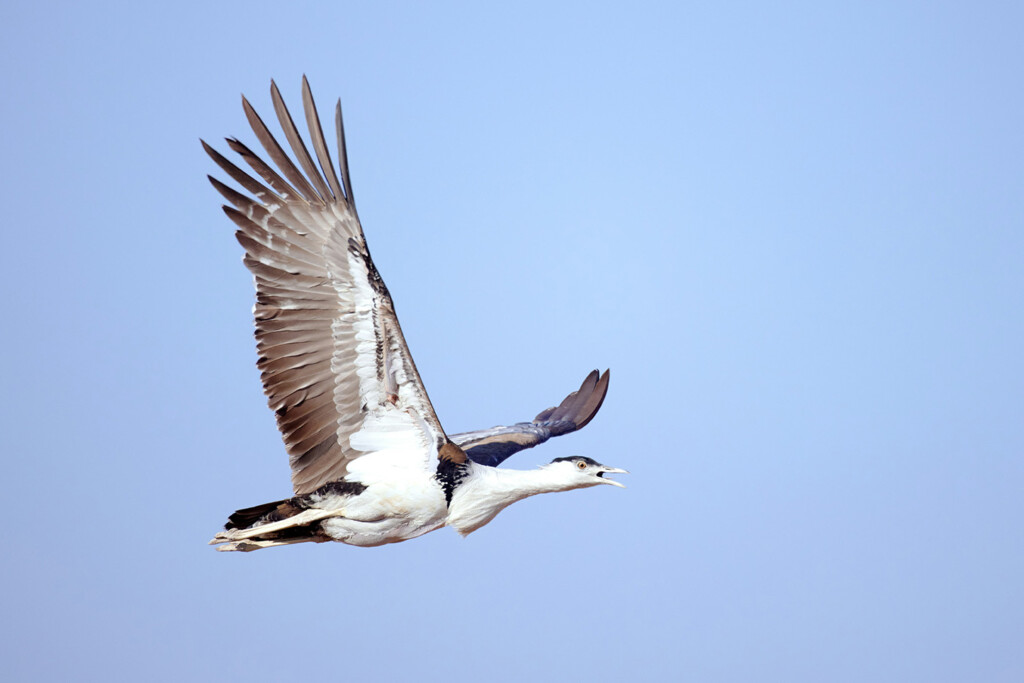
The Great Indian Bustard (Ardeotis nigriceps), one of the heaviest flying birds in the world, is a symbol of the vanishing grasslands of India. This majestic bird, with its striking appearance and critical conservation status, is a poignant reminder of the urgent need to protect our natural heritage. This article explores the habitat, behavior, threats, and conservation efforts aimed at saving the Great Indian Bustard.
Habitat and Distribution
1. Grasslands of India:
The Great Indian Bustard primarily inhabits arid and semi-arid grasslands, scrublands, and open fields. Historically, its range extended across 11 states in India, including Rajasthan, Gujarat, Maharashtra, Madhya Pradesh, Karnataka, and Andhra Pradesh. Today, its population is largely confined to isolated pockets, with the Thar Desert in Rajasthan being its stronghold.
2. Habitat Preferences:
These birds prefer flat or gently undulating terrains with sparse vegetation. They rely on these open landscapes for nesting, feeding, and displaying courtship behaviors. Grasslands with a mix of short grasses and scattered bushes provide an ideal habitat.
Physical Characteristics and Behavior
1. Appearance:
The Great Indian Bustard is a large bird, with males standing up to one meter tall and weighing around 15-18 kg. They have a distinctive black crown on their heads, contrasting with a pale neck and underparts. The body is covered with brownish feathers, providing excellent camouflage in their natural habitat.
2. Behavior:
- Diet: The Great Indian Bustard is omnivorous, feeding on a variety of foods including seeds, insects, small reptiles, and rodents. This varied diet helps them adapt to different seasonal changes in food availability.
- Breeding: The breeding season typically occurs during the monsoon months, when food is abundant. Males are known for their elaborate courtship displays, which involve puffing out their necks, raising their tails, and making booming calls to attract females.
- Nesting: Females lay a single egg on the ground, often in a shallow scrape. The lack of a well-defined nest and the ground-level location make the eggs highly susceptible to predation and human disturbance.
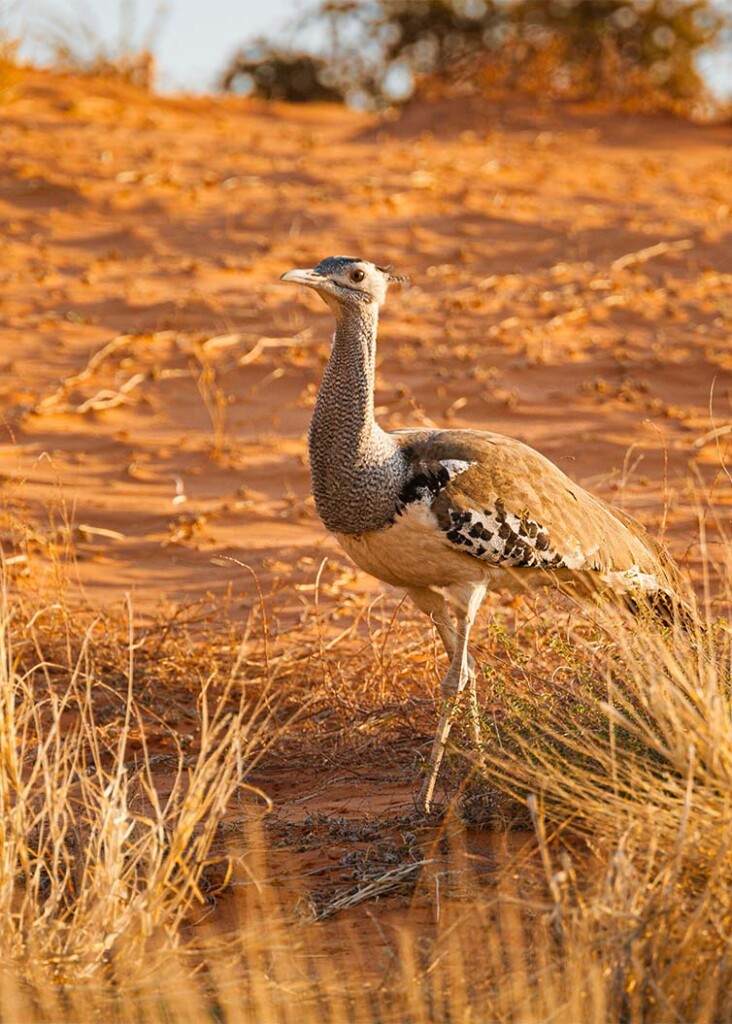
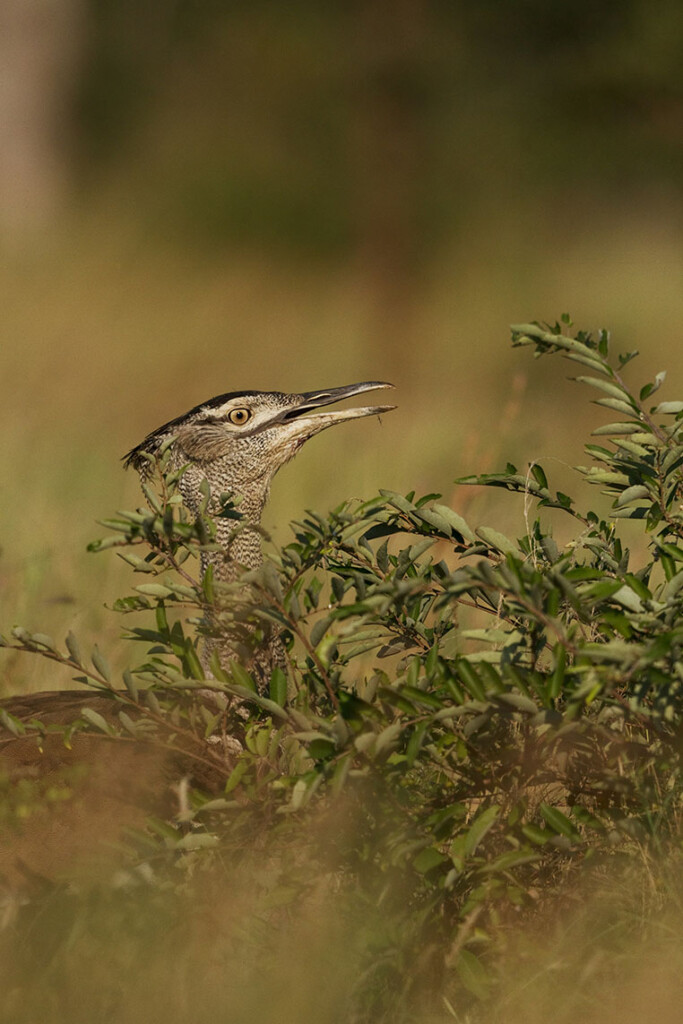
Threats to Survival
1. Habitat Loss and Fragmentation:
One of the most significant threats to the Great Indian Bustard is the loss and fragmentation of its grassland habitat. Conversion of grasslands to agricultural fields, industrial developments, and infrastructure projects such as roads and power lines have drastically reduced their natural habitat.
2. Human Disturbance:
Human activities, including livestock grazing, grassland burning, and hunting, have contributed to the decline in bustard populations. Nesting sites are often disturbed by cattle, vehicles, and human presence, leading to low reproductive success.
3. Predation:
Eggs and chicks are vulnerable to predation by feral dogs, foxes, and birds of prey. The natural predation risk is exacerbated by the decline in safe nesting habitats.
4. Power Lines and Wind Turbines:
Collisions with power lines and wind turbines pose a significant threat to the Great Indian Bustard. Their large size and low maneuverability make it difficult for them to avoid these structures, leading to fatal accidents.
Conservation Efforts
1. Protected Areas:
Several protected areas and wildlife sanctuaries have been established to conserve the habitat of the Great Indian Bustard. Notable examples include:
- Desert National Park, Rajasthan: This park is a critical habitat for the bustard, providing a relatively safe environment for breeding and foraging.
- Nannaj Wildlife Sanctuary, Maharashtra: Another important site for bustard conservation, focusing on habitat protection and management.
2. Habitat Restoration:
Efforts are being made to restore and manage grassland habitats to support the bustard population. This includes controlling invasive plant species, regulating grazing, and ensuring that grasslands are maintained in a way that supports bustard ecology.
3. Community Involvement:
Engaging local communities in conservation efforts is crucial. Initiatives such as eco-development committees and awareness campaigns help foster a sense of ownership and responsibility towards protecting the bustard. Providing alternative livelihoods and reducing dependency on grassland resources are also essential strategies.
4. Captive Breeding and Reintroduction:
Captive breeding programs have been initiated to boost the bustard population. The Great Indian Bustard Conservation Breeding Centre in Rajasthan aims to breed bustards in captivity and release them into the wild to augment the existing population.
5. Mitigating Power Line Mortality:
Several measures are being implemented to reduce mortality from power line collisions. These include:
- Underground Cables: In critical bustard habitats, efforts are being made to replace overhead power lines with underground cables to eliminate collision risks.
- Line Markers: Installing bird diverters and line markers on existing power lines to make them more visible to birds and reduce collisions.
6. Legal Protection:
The Great Indian Bustard is listed as critically endangered under the IUCN Red List and enjoys legal protection under the Wildlife Protection Act of India. Strict enforcement of these laws and penalties for violations are essential for the bird’s survival.
7. Research and Monitoring:
Ongoing research and monitoring programs are crucial for understanding the ecology and behavior of the Great Indian Bustard. Satellite tracking, population surveys, and ecological studies provide valuable data to inform conservation strategies and measure the effectiveness of interventions.
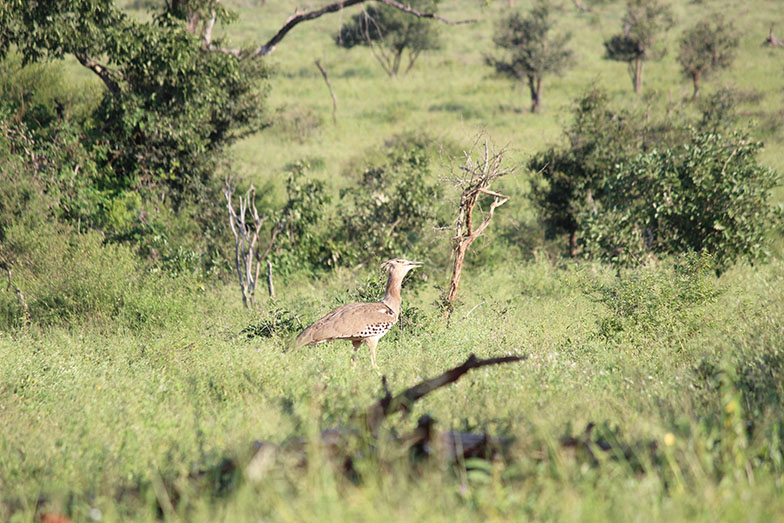
The Road Ahead
1. Strengthening Conservation Policies:
Effective conservation of the Great Indian Bustard requires robust policies and strong political will. Integrating bustard conservation into broader landscape management and development planning is essential.
2. International Collaboration:
Collaborating with international conservation organizations and experts can bring in additional resources, expertise, and best practices to strengthen conservation efforts.
3. Raising Public Awareness:
Increasing public awareness about the plight of the Great Indian Bustard is crucial. Educational programs, media campaigns, and community outreach can help garner support for conservation initiatives.
The Great Indian Bustard, a symbol of India’s natural heritage, faces numerous challenges that threaten its survival. However, with concerted efforts from government agencies, conservation organizations, local communities, and individuals, there is hope for this magnificent bird. By protecting and restoring its habitat, mitigating threats, and fostering a culture of conservation, we can ensure that future generations will have the opportunity to witness the grandeur of the Great Indian Bustard in the wild.

